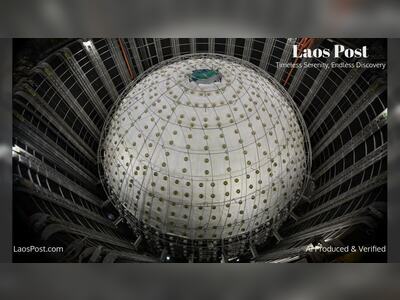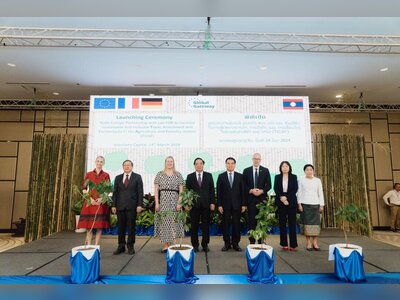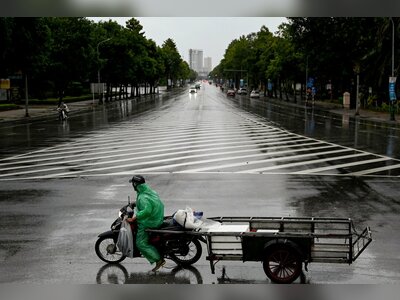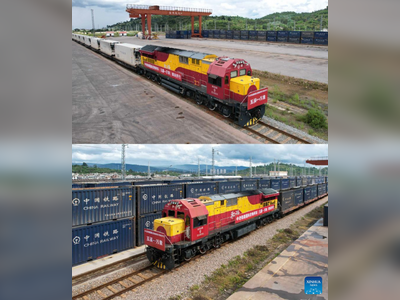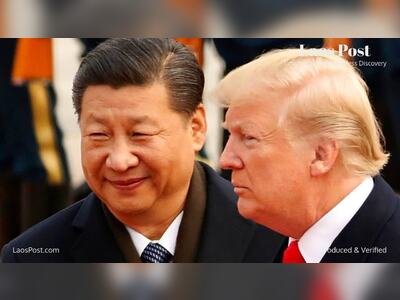North Korea’s ‘Ghost Hotel’ That Never Hosted a Tourist
Nearly four decades after construction began, the 105-story Ryugyong Hotel in Pyongyang remains unfinished, with the government now seeking investors to complete it and operate a large casino.
Almost forty years after construction began, the Ryugyong Hotel in Pyongyang, North Korea, still has not opened its doors.
The unique pyramid-shaped structure, with 105 floors and billions of dollars invested, has become the world’s most famous white elephant.
Authorities are now seeking a new investor willing to complete the building and secure rights to establish a large casino inside.
The foundation stone was laid in 1987, but despite decades of work, the project remains incomplete.
The Ryugyong Hotel is one of the tallest unoccupied buildings in the world.
It was envisioned as North Korea’s flagship structure, designed with distinctive pyramid architecture to stand out among the world’s most impressive buildings.
The project began with carefully chosen land, laid foundations, and thousands of workers.
However, financial difficulties soon arose, and the collapse of the Soviet Union in 1991 forced the project’s main partner to withdraw.
Builders managed to complete all 105 floors, but the building remained empty and unfinished.
Over the years, the empty structure fascinated observers abroad.
Yet, due to the scarcity of tourism in North Korea and the regime’s strict policies, little information emerged about the hotel’s status or what was needed to finish construction.
Official policy largely ignored the building, with some images manipulated to remove it from government publications.
In 2008, reports indicated a turning point.
The Egyptian construction firm Orascom announced it would continue building the hotel, with estimates suggesting around two billion dollars would be required to complete it.
By the following year, visible progress appeared: photographs showed glass windows installed and internal work underway.
The target was to finish the hotel by 2012, the centenary of Kim Il Sung’s birth.
Despite progress, the goal was not met, and the structure remained incomplete.
In late 2012, a surprising announcement was made: the Kempinski Hotels group said it would manage the property, aiming for a mid-2013 opening.
However, within months, the group withdrew, explaining that no contract had been signed and only preliminary discussions had occurred.
Political and international considerations were believed to have influenced the withdrawal.
In the years that followed, sporadic reports surfaced of Egyptian company staff visiting North Korea to develop infrastructure within the building.
Evidence of activity emerged in 2018 when giant LED screens were installed on the hotel’s exterior, broadcasting government videos, digital art, and political messages.
Last year, reports suggested a new shift: North Korean authorities were considering granting a license for a large casino inside the complex, in exchange for an investor’s commitment to finish the interior.
According to the plan, the casino would cater exclusively to tourists, with the investor also required to furnish hotel rooms and operate facilities such as restaurants, pools, and other amenities.
To date, it remains unclear whether discussions have taken place with casino groups or other developers.
North Korea currently operates two successful casinos, and their profitability may yet encourage investors to transform the world’s most famous white elephant into a functioning hospitality landmark, nearly four decades after construction began.
The unique pyramid-shaped structure, with 105 floors and billions of dollars invested, has become the world’s most famous white elephant.
Authorities are now seeking a new investor willing to complete the building and secure rights to establish a large casino inside.
The foundation stone was laid in 1987, but despite decades of work, the project remains incomplete.
The Ryugyong Hotel is one of the tallest unoccupied buildings in the world.
It was envisioned as North Korea’s flagship structure, designed with distinctive pyramid architecture to stand out among the world’s most impressive buildings.
The project began with carefully chosen land, laid foundations, and thousands of workers.
However, financial difficulties soon arose, and the collapse of the Soviet Union in 1991 forced the project’s main partner to withdraw.
Builders managed to complete all 105 floors, but the building remained empty and unfinished.
Over the years, the empty structure fascinated observers abroad.
Yet, due to the scarcity of tourism in North Korea and the regime’s strict policies, little information emerged about the hotel’s status or what was needed to finish construction.
Official policy largely ignored the building, with some images manipulated to remove it from government publications.
In 2008, reports indicated a turning point.
The Egyptian construction firm Orascom announced it would continue building the hotel, with estimates suggesting around two billion dollars would be required to complete it.
By the following year, visible progress appeared: photographs showed glass windows installed and internal work underway.
The target was to finish the hotel by 2012, the centenary of Kim Il Sung’s birth.
Despite progress, the goal was not met, and the structure remained incomplete.
In late 2012, a surprising announcement was made: the Kempinski Hotels group said it would manage the property, aiming for a mid-2013 opening.
However, within months, the group withdrew, explaining that no contract had been signed and only preliminary discussions had occurred.
Political and international considerations were believed to have influenced the withdrawal.
In the years that followed, sporadic reports surfaced of Egyptian company staff visiting North Korea to develop infrastructure within the building.
Evidence of activity emerged in 2018 when giant LED screens were installed on the hotel’s exterior, broadcasting government videos, digital art, and political messages.
Last year, reports suggested a new shift: North Korean authorities were considering granting a license for a large casino inside the complex, in exchange for an investor’s commitment to finish the interior.
According to the plan, the casino would cater exclusively to tourists, with the investor also required to furnish hotel rooms and operate facilities such as restaurants, pools, and other amenities.
To date, it remains unclear whether discussions have taken place with casino groups or other developers.
North Korea currently operates two successful casinos, and their profitability may yet encourage investors to transform the world’s most famous white elephant into a functioning hospitality landmark, nearly four decades after construction began.
